mashing Through 490 — Fragmenting Prospects for Avoiding 2 C Warming
“The IPCC indicated in its fourth assessment report that achieving a 2 C target would mean stabilizing greenhouse gas concentrations in the atmosphere at around 445 to 490 ppm CO2 equivalent or lower. Higher levels would substantially increase the risks of harmful and irreversible climate change.” –Johan Eliasch
(NOAA’s greenhouse gas index shows that CO2e concentration for 2015 averaged 485 ppm. Given recent rates of rise, the 2016 average should be near 490 ppm CO2e. At the latest, this key threshold will be crossed some time during 2017. Image source: NOAA’s Earth Systems Research Laboratory.)
*****
There are a few things we know about climate change that should really keep us up at night. The first is that the world is warming, and this warming of the Earth, in so many ways, is dangerous to human beings and all the other innocent creatures living here.
The second is that, over recent years, this warming has been very rapid. In the three years from 2014 through 2016, the Earth’s atmospheric temperature is likely to have increased by 0.2 degrees Celsius or more to around 1.2 C above 1880s levels. When thinking about this in absolute terms, it doesn’t sound like much. But in geological terms, this is very rapid warming, especially when you consider that, at the end of the last ice age, it took about 400 years to produce a similar amount of atmospheric temperature gain.
What all this boils down to is that as global temperatures have spiked, we’ve rapidly crossed an established climate threshold into a far more geophysically dangerous time.
Surging Levels of Heat-Trapping Gasses
405 parts per million carbon dioxide. That’s about the average level of CO2 accumulation the Earth’s atmosphere will see by the end of 2016, due primarily to fossil-fuel burning. It’s a big number. The Earth hasn’t seen a number like that in millions of years. But 405 ppm CO2 doesn’t tell the whole story of heat-trapping gasses in the atmosphere. To do that, we have to look at another number — carbon dioxide equivalent or CO2e.
(During a typical September and October, daily or weekly values may briefly dip below 400 ppm CO2, as detected at the Mauna Loa Observatory. But after September-October 2016, it’s unlikely that you or I will ever see such low levels of CO2 from that measure again in our lifetimes. Image source: Scripps Institution of Oceanography.)
490 ppm CO2e. That’s about the total amount of CO2-equivalent heat forcing from all the human-added greenhouse gasses like CO2, methane, various nitrogen compounds, and other gaseous chemical waste that the Earth’s atmosphere will see by late 2016 to early 2017.
Why is this a big deal?
Four reasons —
First, hitting 490 CO2e crosses the Intergovernmental Panel on Climate Change‘s (IPCC) lowest climate threshold. If this were a highway, and climate change were a collision, we’d now be careening through the first guardrail.
Second, 490 CO2e represents significant current and future warming (and there’s good reason to believe that IPCC’s estimates of that warming may be a bit conservative).
Third, it signifies that we have now fully entered the era of catastrophic climate change, with some bad climate outcomes almost certainly locked in as a result. We see a number of these instances now in the form of extreme rainfall events, extreme drought, coral bleaching, sea ice and glacial melt, threatened crops, ocean anoxia and dead zones, widespread harmful algae blooms, ocean acidification, and expanding infectious disease ranges. However, what we are experiencing now is just the tip of the (melting) climate change iceberg if we do not rapidly respond.
Fourth, if we were never really aware before that we very urgently need to get serious about swiftly cutting fossil-fuel emissions, protecting and regrowing forests, and working to help people to adapt to climate change, then this is our wake-up call.
Crossing the First Climate Threshold — 490 ppm CO2e
How did 490 ppm CO2e become a climate milestone? In short, it represents the threshold at which the first of four global-warming scenarios is basically locked in.
To understand this more, we need to take a closer look at these four scenarios, which were established by the IPCC in 2007. The IPCC calls these scenarios Representative Concentration Paths or RCPs. The four potential pathways are informed by the amount of fossil fuels potentially burned through the year 2100, the levels of CO2e heat-trapping gasses in the atmosphere as a result, and how much the world consequently warms over this timeframe.
RCPs range from 2.6 to 8.5 watts per meter squared, with these measurements indicating the amount of added heat from the greenhouse gas additions trapped at the top of the atmosphere. A more direct measure is to look at the total greenhouse gas thresholds for each scenario. Broken down, the four RCP pathways represent 490 ppm CO2e (RCP 2.6), 650 ppm CO2e (RCP 4.5), 850 ppm CO2e (RCP 6.0), and 1370 ppm CO2e (RCP 8.5). For reference, atmospheric CO2e levels just prior to the start of large-scale fossil fuel burning were around 300 ppm. By comparison, 1370 ppm CO2e is about equivalent to the levels during some of the worst hothouse mass extinctions the Earth has experienced.
In a nutshell, RCPs represent potential warming scenarios. A middle-range temperature increase estimate by the year 2100 for each scenario can be seen below in this table provided by Skeptical Science:
Developed at the IPCC’s 2007 meeting, these RCPs also describe a range of potential human civilization responses to global warming. RCP 2.6 allows for fast emissions cuts beginning at the time of the 2007 meeting. These cuts would swiftly level off and then reduce fossil-fuel emissions and ultimately generate one of the milder warming scenarios. The IPCC envisioned that warming would remain near 1.5 C this century under these emissions cuts. Scientists hoped this scenario would allow the avoidance of most of climate change’s bad outcomes.
RCP 4.5 assumes somewhat less aggressive emissions cuts, with fossil-fuel burning and related carbon emissions peaking near 15 billion tons per year by the mid-2040s. Stronger warming is locked in with this scenario — about 2.4 C according to IPCC — and scientists were doubtful that serious climate impacts could be avoided.
(We’ve pretty much missed the window for the IPCC’s mildest possible climate scenario, RCP 2.6, which would have required strong policies and policy support almost immediately following the IPCC’s 2007 meeting. Image source: Skeptical Science.)
RCP 6.0 shows emissions cuts that are slow to unfold. Global carbon emissions would peak around 19 billion tons per year by 2060 and then rapidly drop off. Warming under this scenario is considerable, hitting 3 C by the end of this century. So much warming and such high levels of greenhouse gasses would result in some seriously bad outcomes.
The final pathway, RCP 8.5, represents an absolute nightmare climate scenario. Under this path, real emissions cuts are not achieved. Despite growth in renewable energy, all energy use continues to grow as well, including fossil fuels. As a result, in this scenario, the IPCC expects the Earth to warm by a catastrophic 4.9 C by 2100.
In the context of understanding climate change, particularly for someone interested and patient enough to read the IPCC reports, the various RCP scenarios were a real help in exploring climate change options and outcomes. They helped many scientists and policymakers provide clear warnings and rewards for action by governments, the public, and business leaders.
(Climate change produces multiple difficult-to-predict impacts. As temperatures rise, conditions grow ever more extreme. In the graph above, it’s worth noting that sea-level rise is already an issue for many cities and regions including numerous Pacific islands, Bangladesh, the Indus Delta region, South Florida, New Orleans, New York, and the various low-lying coastal and river delta regions around the world. Image source: Federal Highway Administration.)
But despite very clear communication and activism from scientists like Dr. James Hansen, policy bloggers like Joe Romm, and climate activists like Bill McKibben, overall global emissions policy has not moved swiftly enough to stay within the RCP 2.6 pathway in the 9 years since its creation. In fact, decent global emissions reduction policies didn’t begin to universally take hold until recently, in 2014 and 2015, and those implemented were often ardently opposed by fossil fuel-related political interests in countries like Australia, Great Britain, Germany, Canada, and the United States.
As a result, emissions stayed near or just below worst-case pathway ranges (RCP 8.5). As of this year, the window for achieving the RCP 2.6 scenario — or the mildest and most optimistic warming scenario — appears to have closed.
Possibly More Warming From 490 CO2e Than We Feared
Hitting 490 CO2e in 2016 means that the 1.5 C warming IPCC predicted for this amount by 2100 is almost certainly locked in. With the world hitting near 1.2 C above 1880s temperature averages in 2016, some reasonable questions have been raised, the most relevant being if 490 ppm CO2e will result in more warming than IPCC predicted.
To be fair, the 1.5 C figure above is a simplification of model predictions ranging from about 0.9 C to around 2.3 C during this century under a 490 ppm CO2e forcing. However, since we’ve already surpassed the lower portion of this range, and we’re barely into the beginning of this century, it appears that some of the lower sensitivity model runs were rather far off the mark. Moreover, paleoclimate proxy temperature data indicates that 490 ppm CO2 during the Middle Miocene produced warming in the range of 4 C long-term (over hundreds of years). Given this implied long-term impact, and coupled with annual readings that are already in the 1.2 C range, it’s possible to infer an ultimate warming closer to 2 C by 2100 from a maintained 490 ppm CO2e. Hitting such a mark would only require about 0.11 C warming per decade — a rate of decadal warming about 40 percent slower than the temperature rise seen from the late 1970s through the 2010s.
(Amplifying feedbacks due to loss of sea ice reflectivity in the Arctic and Antarctic, reduced carbon-store uptake and carbon-store emissions can result in an overall greater sensitivity to an initial heat forcing such as the current 490 ppm CO2e. Paleoclimate proxies hint that these feedbacks may cause the Earth System to be more sensitive than IPCC models currently indicate. Image source: LANCE MODIS.)
The paleoclimate-implied warming from the other climate scenarios is likely higher as well. RCP 4.5 probably hits closer to 3 C under such a climate sensitivity range. RCP 6.0 probably sees 4 to 4.5 C warming by 2100. And the worst-case RCP 8.5 probably achieves closer to 6 C warming.
It’s for these and other reasons that some scientists say that avoiding 1.5 C at this time is probably impossible. Meanwhile, it’s pretty reasonable to say that avoiding 2 C presents a huge challenge requiring a very rapid response, a goal that will probably require reducing the atmospheric CO2e levels below their current ranges.
CO2e Increasing by 3 ppm Per Year
Human beings are still dumping massive volumes of carbon into the atmosphere. Carbon emissions are still near record-high levels. As a result, atmospheric CO2e levels are rising by about 3 ppm or more each year. For 2016, CO2 alone may rise by 3.4 ppm or more, and CO2e may jump by more than 4 ppm — to hit near 490 ppm CO2e. This is due in part to the 2015-2016 El Nino’s cyclical warming of the Equatorial oceans, forests, and lands on top of the already-strengthening heat of human warming. And this added heat reduces the ability of these carbon sinks to take in CO2.
Even if this rate of CO2e rise is just maintained, it’s possible that we’ll see 1.5 C warming not by the end of this century, but by the early 2030s. And as the world heats up, it’s likely we’ll see additional emissions coming as carbon sinks become stressed and stop taking in such high volumes of greenhouse gasses or even turn into sources.
The result is that the challenge presented to us now is far greater, far more urgent than that of 2007. We risk, over the next few decades, locking in not just 2 C warming, but 3 C warming or more if we do not act swiftly and seriously. And with 1.5 C warming coming with almost 100 percent certainty, we need to ramp up climate-change mitigation strategies as well as provide aid and succor for the increasing harms, dislocations, and inequalities that will likely emerge.
Links:
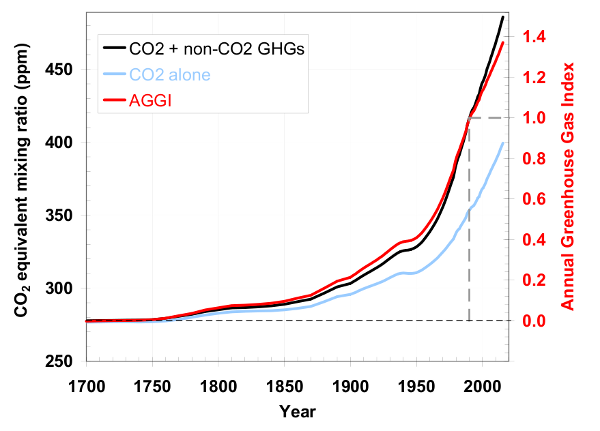
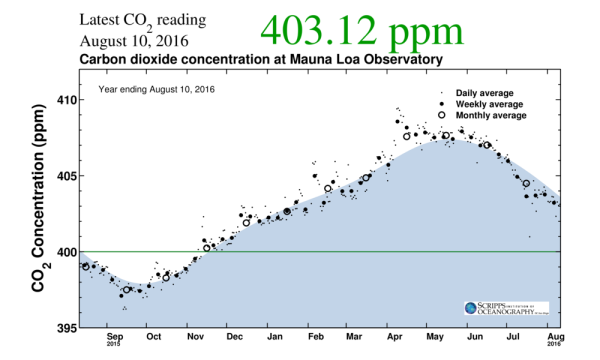
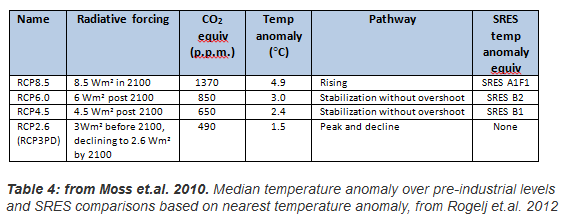
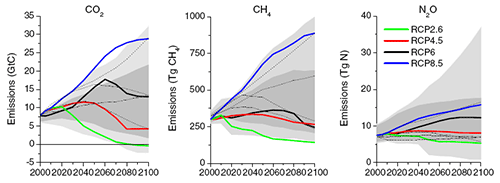
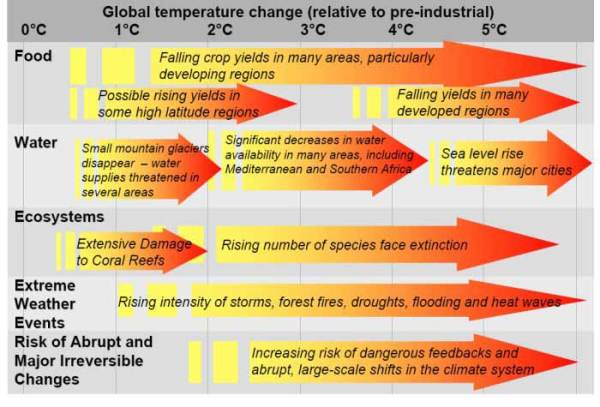
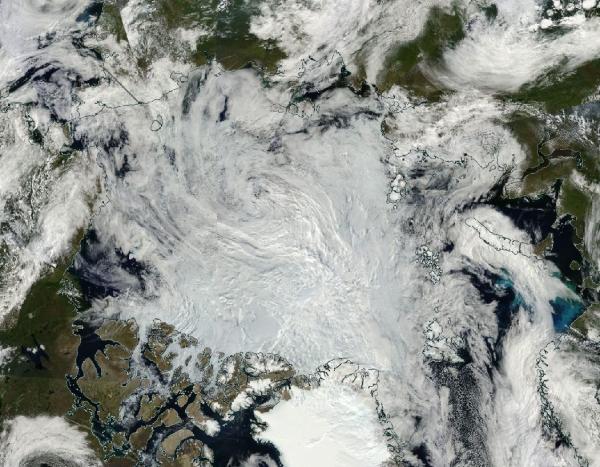



Geen opmerkingen:
Een reactie posten